In the quest to exploit unique properties at the nanoscale, scientists at Stevens Institute of Technology have developed a novel technique for creating uniform arrays of metallic nanostructures.
Sep 6th, 2011
Read more
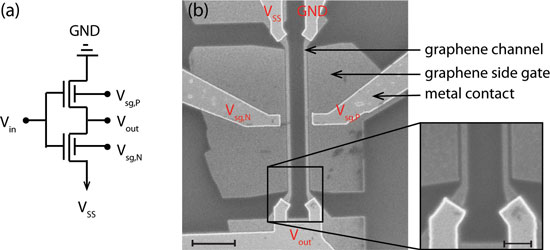 Researchers are making progress in creating digital transistors using called graphene, potentially sidestepping an obstacle thought to dramatically limit the material's use in computers and consumer electronics.
Researchers are making progress in creating digital transistors using called graphene, potentially sidestepping an obstacle thought to dramatically limit the material's use in computers and consumer electronics.
Sep 6th, 2011
Read more
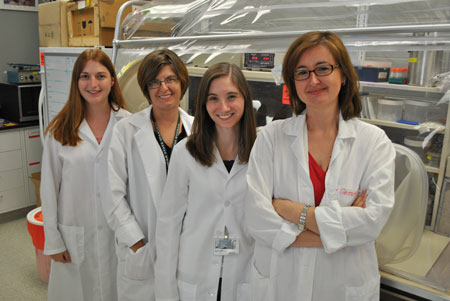 Researchers at Michigan State University have unraveled the mystery of how microbes generate electricity while cleaning up nuclear waste and other toxic metals.
Researchers at Michigan State University have unraveled the mystery of how microbes generate electricity while cleaning up nuclear waste and other toxic metals.
Sep 6th, 2011
Read more
A team of Penn State University scientists has invented a new system that uses magnetism to purify hybrid nanoparticles -- structures that are composed of two or more kinds of materials in an extremely small particle that is visible only with an electron microscope.
Sep 6th, 2011
Read more
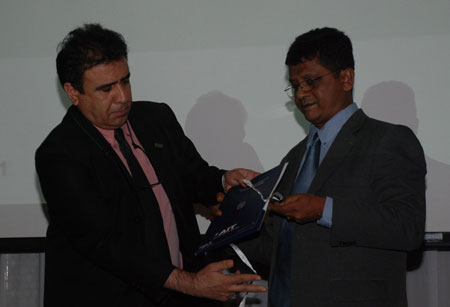 Solar water purifier, fingerprint identification, gas sensors features in the list.
Solar water purifier, fingerprint identification, gas sensors features in the list.
Sep 6th, 2011
Read more
 Neutron scattering studies of 'cobalt blue', a compound prized by artists for its lustrous blue hue, are revealing unique magnetic characteristics that could answer questions about mysterious properties in other materials.
Neutron scattering studies of 'cobalt blue', a compound prized by artists for its lustrous blue hue, are revealing unique magnetic characteristics that could answer questions about mysterious properties in other materials.
Sep 6th, 2011
Read more
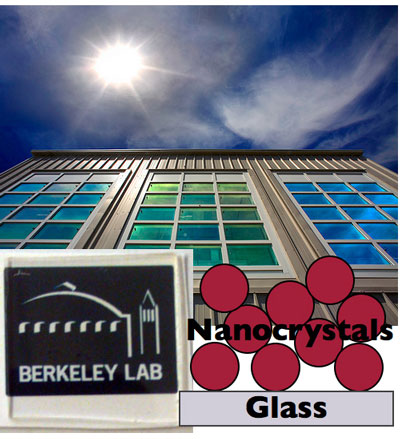 Researchers with the U.S. Department of Energy (DOE)'s Lawrence Berkeley National Laboratory (Berkeley Lab) have unveiled a semiconductor nanocrystal coating material capable of controlling heat from the sun while remaining transparent.
Researchers with the U.S. Department of Energy (DOE)'s Lawrence Berkeley National Laboratory (Berkeley Lab) have unveiled a semiconductor nanocrystal coating material capable of controlling heat from the sun while remaining transparent.
Sep 6th, 2011
Read more
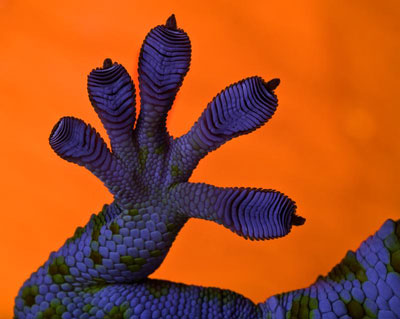 Scientists at INM - Leibniz Institute for New Materials will reproduce "hierarchical" structures in a new project granted recently by DFG. The project will join forces between two INM groups - Functional Surfaces and Structure Formation.
Scientists at INM - Leibniz Institute for New Materials will reproduce "hierarchical" structures in a new project granted recently by DFG. The project will join forces between two INM groups - Functional Surfaces and Structure Formation.
Sep 6th, 2011
Read more
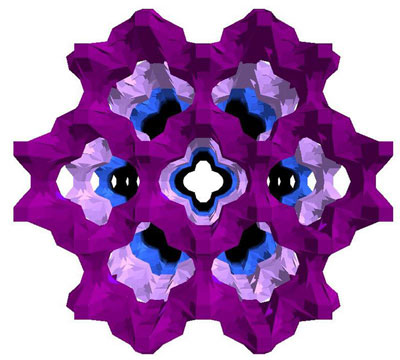 An der Johannes Gutenberg-Universitaet Mainz wurde eine grundlegende Methode entwickelt, um Strukturen auf der Nanoebene sichtbar zu machen. Damit ist die Anordnung von Atomen und Molekuelen in unterschiedlichen Feststoffen von Zement bis hin zu Pharmaka genau festzustellen. Das noch junge Verfahren aus der Elektronenmikroskopie kann die Struktur winzigster Kristalle aufloesen.
An der Johannes Gutenberg-Universitaet Mainz wurde eine grundlegende Methode entwickelt, um Strukturen auf der Nanoebene sichtbar zu machen. Damit ist die Anordnung von Atomen und Molekuelen in unterschiedlichen Feststoffen von Zement bis hin zu Pharmaka genau festzustellen. Das noch junge Verfahren aus der Elektronenmikroskopie kann die Struktur winzigster Kristalle aufloesen.
Sep 6th, 2011
Read more
A long-term exhibition at the Walt Disney World Resort allows visitors to understand the tiny world of nanotechnology through hands-on experiments that use microscopes to reveal exciting images invisible to the naked eye.
Sep 6th, 2011
Read more
Das im Rahmen der "GoBio"-Initiative des Bundesministeriums fuer Bildung und Forschung in den kommenden drei Jahren mit 3,3 Millionen Euro gefoerderte Forschungsvorhaben "Intelligent siRNA for therapeutic applications" ist ein Projekt, das im neuen interfakultaeren "Jena Center for Soft Matter (JCSM)" der Friedrich-Schiller-Universitaet Jena gestartet ist.
Sep 6th, 2011
Read more
Toyohashi Tech researchers develop a low cost and efficient method for producing electrically conducting composites based on electrostatic adsorption of CNTs onto resin and ceramic particles for applications including enzymes and cosmetics.
Sep 6th, 2011
Read more
Leading public research institutions ink agreement to support joint research projects and platforms for scientific exchange.
Sep 6th, 2011
Read more
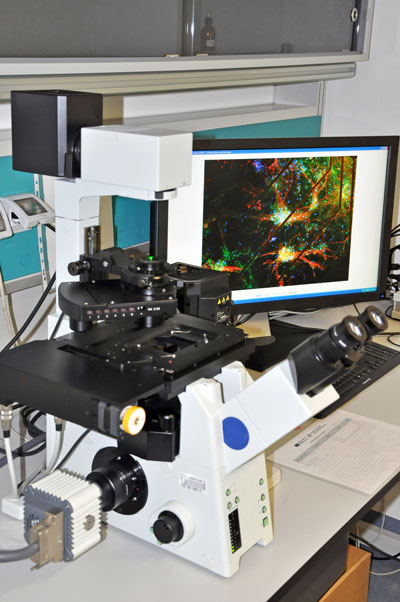 Extensive range of potential application in nanobiotechnology, nanoengineering, food processing and pharmaceuticals.
Extensive range of potential application in nanobiotechnology, nanoengineering, food processing and pharmaceuticals.
Sep 5th, 2011
Read more
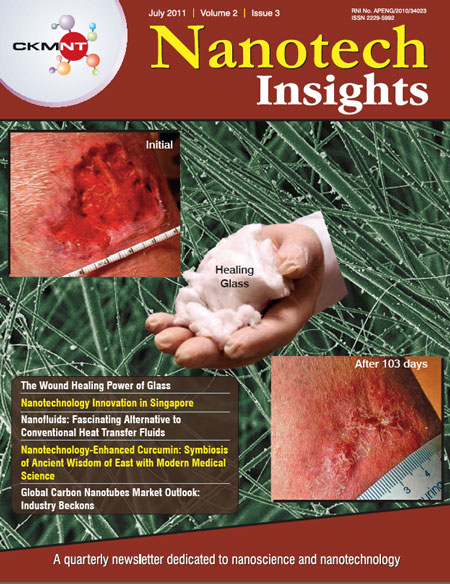 The July 2011 issue of Nanotech Insights, a quarterly newsletter dedicated to the field of nanoscience and nanotechnology, is now available from CKMNT.
The July 2011 issue of Nanotech Insights, a quarterly newsletter dedicated to the field of nanoscience and nanotechnology, is now available from CKMNT.
Sep 5th, 2011
Read more
A group of researchers funded by the Deutsche Forschungsgemeinschaft (DFG, German Research Foundation) is among the three research teams nominated for the Deutscher Zukunftspreis in 2011. Dresden-based researchers Professor Karl Leo, Dr. Jan Blochwitz-Nimoth and Dr. Martin Pfeiffer are among those hoping to win this year's Federal President's Award for Technology and Innovation.
Sep 5th, 2011
Read more










 Subscribe to our Nanotechnology News feed
Subscribe to our Nanotechnology News feed